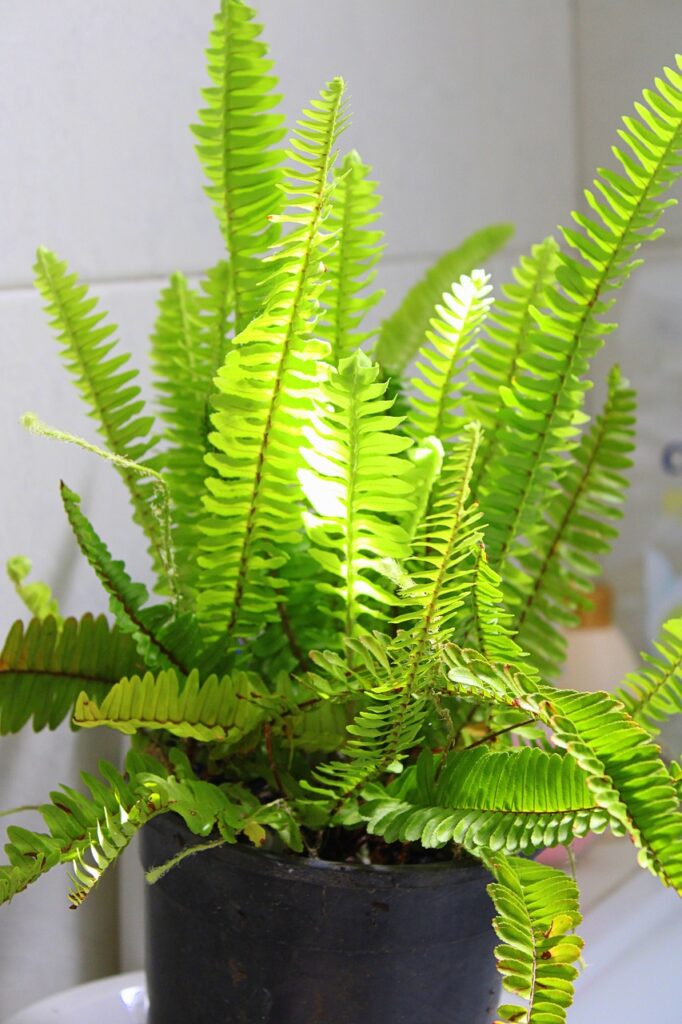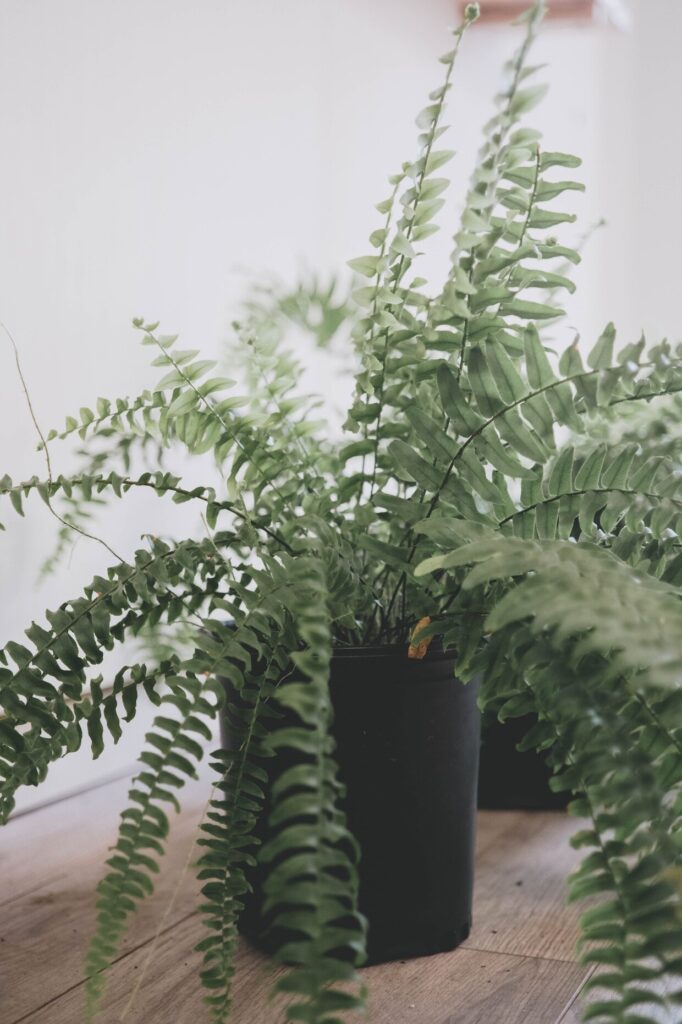Boston ferns are a species of ferns in the Lomariopsidaceae family that is native to America. There are many ways to propagate a Boston fern plant. In this blog post, I will explain how the Boston Fern propagation through cutting in two different methods. If you want to grow a Boston fern, I will break down each approach step by step so you can easily comprehend what to do.
How to propagate Boston fern from cuttings?
A Boston fern can be propagated from its cutting using one of two methods. You can either cut their divisions or the plant’s runners. I will go into detail about what these two are as I explain to you the steps on how to start propagating a Boston fern.
Propagation by division
Separating the sections
Carefully take out your Boston fern plant from its pot to cut them into separate sections. Be extra cautious to not damage or tear apart the plant’s leaves and roots. To separate the roots properly without damaging them, shake off the soil that is clinging to the plant and gently put your finger through the plant’s roots to loosen them.
Dividing the sections
The number of sections that you can cut off will depend on the mother plant’s actual size. To divide them without damaging each division, use a sharp shear to cut the root system.
Checking the cuttings
Ensure that each section that you cut has leaves, stems, and roots in them so that your new Boston fern plant can grow optimally in their new pots. Cutting through the plant’s roots directly won’t have any negative effect, so you don’t have to worry about it.
Returning the mother plant
Return the mother plant to its original pot and transplant the sections that you’ve divided into a new pot. Make sure to plant them in a pot that fits them properly. Ensure that there is a gap that is about 2 inches on either side of the roots and plant.
Caring for your new Boston fern

After planting your new set of Boston fern plants, provide them with water and put them in a location that is bright. You have to make sure that they are in a bright location but not directly exposed to sunlight. To know when to water your Boston fern plant, just touch the top inch of the soil. If it feels dry, do not hesitate to water your new plant.
Propagation by runners
Select a mother plant to obtain a runner
First, select a healthy runner that is poking out of your adult Boston fern plant. Runners are the leafless stems that are present in your Boston fern plants that are mainly used for its propagation. Choose the ones that are green in color as the brown ones have a high chance of not growing well.
Separation of runners from its adult Boston fern
You will need to separate the runners from the adult Boston fern at the closest possible point. The cutting that you will make must have a few sections of the root system included for a successful propagation.
Select a proper sized pot
Select a good sized pot and pour a high quality potting mix in it. Plant the runners that you’ve cut in a potting mix. To do this, you must dig a hole in the center of the potting mix and bury the cutting’s rooting system first. Lay the runner on top of the pot so that it would frequently have contact with the soil because it is where the new root system of the cutting will start to develop.

Watering the runners
After placing the cuttings in their new pots, you can immediately water them. It is important to only water your new Boston fern plant when you feel like the top inch of the soil around it is dry. This will help the top inch of the soil to be consistently moist but not soggy.
Monitoring your baby fern
In this stage of your baby fern, all you need to do is to just routinely check the plant and follow a good watering schedule. Due to the runners’ delicate roots, you must avoid touching or lifting them. Accidentally damaging them will result in a low success rate for new growth.
Once you notice a new growth, just resume the routines that you regularly follow when taking care of your baby fern.
FAQs
Can you propagate a Boston fern in water?
Aside from propagating this variety of fern in soil, you can also choose to propagate them in water. The method might be different, but this method should also provide you a healthy set of Boston fern plants as long as you take proper care of them. Just make sure that you provide them with everything that they need for a successful propagation.
How long do Boston ferns live?
Given the fact that Boston fern plants have been around since more than 350 million years ago and are still thriving in the present. When given the necessary nutrients, water, and enough sunlight that the plant needs, a Boston fern plant can live for more than a hundred years.

Do Boston ferns prefer sun or shade?
Boston ferns like bright areas with an optimum temperature of 60 °F to 75 °F. Although these plants love sunlight, being directly exposed to the sun will cause their leaves to dry and will result in the plant dying. The plant can also tolerate a cold temperature as low as 50 °F.
Conclusion
Methods of Boston fern propagation are very easy and can live for quite a long time. Although you will need to have a lot of patience to properly separate the cuttings or the runners from its mother plant because they are very delicate and can get easily damaged. A Boston fern also does not take a long time to mature into an adult plant. This plant is very suitable if you are thinking of growing plants indoors.

Elizabeth Mcmillan is a passionate gardener with a strong interest in plants. She used to be a teacher, but Elizabeth has spent the last few years immersing herself in the world of plants, learning about their biology and cultural value and trying out different ways of growing them in her own garden. Elizabeth Mcmillan loves indoor plants, succulents, and cacti, and her friends and family know her as a plant care expert.








